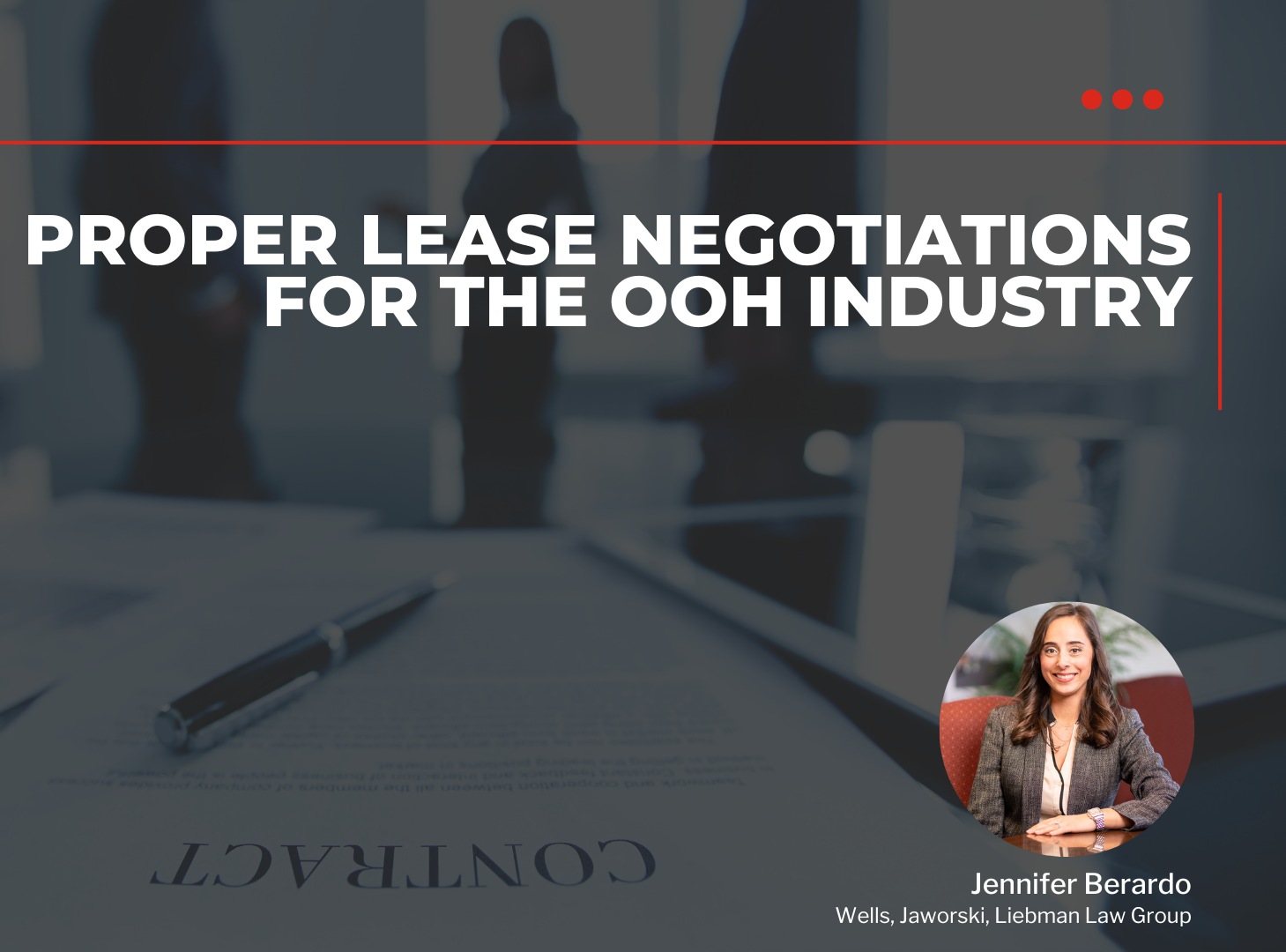
By Jennifer Berardo, associate at Wells, Jaworski, Liebman Law Group
There are certain practical day-to-day issues that can be avoided through thoughtful lease negotiations and execution. Among others, these may include the lease term, sign location, ownership of the structure, termination, redevelopment, relocation, and modernization. While there are some situations that you may be unable to anticipate, a majority of these issues can be either eliminated, managed, or modified through thoughtful lease negotiations.
Lease negotiations may seem time-consuming and frustrating, but a little extra due diligence and reflection could be the difference between a secure lease and costly litigation. Setting forth specific provisions within your lease will allow both parties to anticipate a given situation and agree in advance as to the course of action that should be taken if that situation arises. Without precise terms, you face vagueness which could be construed, or misconstrued, by another party or court of law. Below are some key provisions which should be set forth in specific terms.
Lease Term and Sign Location
Provide a significant initial lease term with automatic renewal provisions. The automatic renewal provisions should be fair and allow for specific and clear rent increases at fair market value. Depending on the proposed location, you may also wish to obtain a survey of the property which identifies the location of the sign and whether there are any easements or restrictions on the property which may affect the operation of the sign.
Ownership/Termination
A lease should always make certain that the sign structure and any associated appurtenances are the ownership of the sign operator. Further, the OOH company should have the right to terminate the lease at any given time if the use, maintenance or operation of the sign becomes impossible. Termination should detail foreseen and unforeseen circumstances, including, inter alia, the inability to secure or maintain state or local approvals, obstructed visibility, inability to maintain power, inability to access the property, inability to reconstruct a damaged sign, or diminished advertising value. You may also consider including a catch all provision for unforeseen circumstances, i.e., if you are unable to secure an advertiser for the sign for a period of six months or more. Of course, termination rights will require additional negotiations as it provides the out of home company with the right and flexibility to terminate the lease for a variety of reasons.
Redevelopment and Relocation
Anticipating the potential redevelopment of the property can allow the OOH company the opportunity to site the sign structure in a location on the property which has minimal impact to existing and potential site operations and also provides for maximum visibility. In the event the property owner does intend to redevelop the property, the redevelopment terms should require specific approvals and construction details, maximum time for the sign to be removed, and the ability to relocate the sign to another portion of the property. If possible, the other potential locations for siting the sign should be identified in the lease to avoid future discord and inability to agree.
Modernization
The lease should provide the OOH company with the ability to modernize or upgrade the sign structure at any time during the Lease term, without the necessity to renegotiate pertinent lease terms. It should include provisions of consent to obtain any necessary governmental approvals with the assistance of the property owner.
Due Diligence
During lease negotiations, it is often helpful to go the extra step with due diligence. It is always recommended to physically go to the site, walk the property, ensure that there is proper access and visibility for the sign, and that there are no other topographical constraints which may hinder the operation and maintenance of the sign. This may include the existence of wetlands, property located in an environmentally constrained area, access to a power source, use restrictions, deed restrictions and easements, and potential road widening. Obtaining specific property information prior to executing a lease will protect the OOH company, the asset and its future operation and maintenance.
Protecting a Lease
We can protect our leases and avoid further issues with a prospective purchaser of the property by recording a memorandum of lease. While the memorandum of lease does not need to specify confidential information, it should lay out basic terms such as lease term, location, party information, and right of first refusal. At a minimum, this places any prospective purchaser or OOH company on notice of the rights which are legally existing on the property.
A little extra preparedness can avoid unnecessary disputes. Be precise, be thoughtful, and be specific. While it may seem like a hassle to negotiate specific foreseen and unforeseen circumstances, it will be an asset to the leasehold interest and foster a better relationship with the property owner.
Published: November 29, 2022